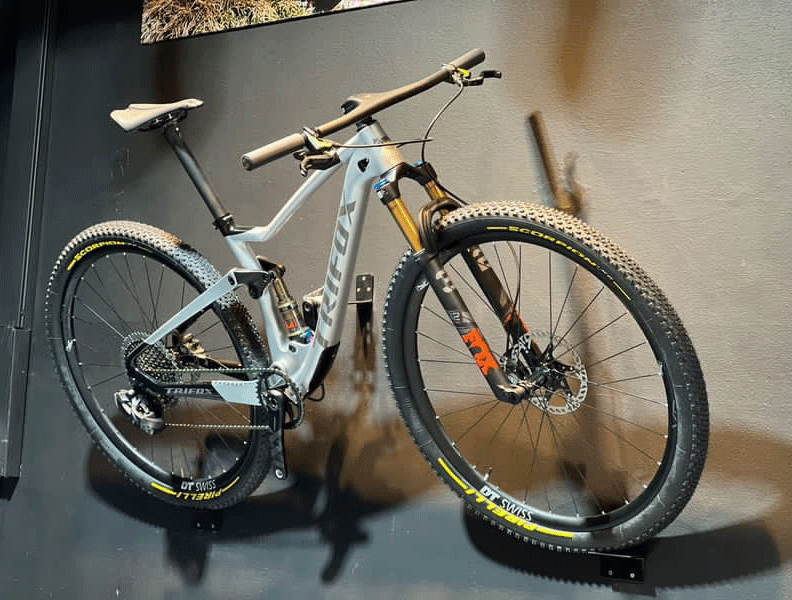
If you are a cycling enthusiast, you have probably heard about the 12-speed bike options on the market. This innovation in bike technology is aimed at improving the biking experience for cyclists and providing better control and performance when it comes to tackling steep hills and rough terrain. But is a 12-speed bike worth the upgrade? In this blog post, we will discuss the pros and cons of transitioning to a 12 speed bike. One of the most significant advantages of a 12 speed bike is the additional gears, which give you better control and smooth shifting on steep or hilly terrain. The advanced gear system also enables you to maintain a steady pace without the need to constantly shift or struggle to find the right gear. This is especially helpful when you are tackling inclines or difficult trails that are challenging to navigate. The gearing system improves the overall performance of the bike, allowing you to speed up, slow down or adjust your pace instantaneously. Another benefit of a 12-speed bike is the weight reduction. The modern bike designs and innovative materials make it easier to have a lightweight bike, making the cyclist faster and more efficient. This lighter frame also makes it easier to climb hills and navigate challenging terrain, as the bike's weight no longer holds you back or weighs you down as you pedal. With a reduced weight and enhanced efficiency, you can push yourself to go further in your cycling adventures. One concern that many people have when transitioning to a 12-speed bike is the cost. These bikes tend to come with a higher price tag compared to their counterparts. However, the investment is well worth it, as the advanced technology and improved performance offered by a 12-speed bike are unparalleled. If you are an avid cyclist who loves to explore, invest in a bike with a 12-speed option, and you will not regret it. For example, use the TRIFOX BIKE PIONEER dual suspension mountain bike. Another disadvantage of 12-speed bikes is the maintenance. With more gears involved, it can become a challenge to keep the bike running smoothly. An experienced rider can handle any tune-ups that come with the 12 gears, but it can be intimidating for beginners. However, this can all be alleviated by finding a reputable and skilled bike technician who can help you maintain your bike and keep it running smoothly. In conclusion, investing in a 12-speed bike is a significant upgrade. Despite the slightly higher cost and maintenance requirements, the advantages in speed, efficiency, and performance are unmatched. As technology advances, we can expect to see other finer details built-into the bike to improve safety and performance. Whether you are looking to explore new terrain or want to tackle more challenging cycling routes, a 12-speed bike is a worthy investment for any cycling enthusiast.
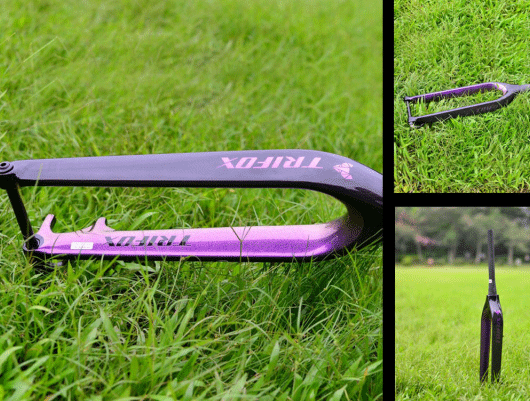
Reforzar una horquilla rígida 29er puede ser una tarea intimidante, pero si se hace correctamente, puede mejorar significativamente la resistencia y durabilidad de la bicicleta. En este artículo, te guiaremos a través de los pasos para refuerzar correctamente tu horquilla rígida 29er para asegurarte de que puedas disfrutar de tu bicicleta por muchos años más. Paso 1: Evalúa la necesidad de refuerzo Lo primero que debes hacer es evaluar si tu horquilla rígida 29er necesita ser reforzada. Inspecciona la horquilla en busca de signos de deformación, protuberancias, abolladuras o grietas en la superficie. Si notas algún daño notable, es posible que sea necesario reemplazar toda la horquilla en lugar de repararla. Si la horquilla parece estar en buen estado, pero estás buscando una mayor resistencia y durabilidad, entonces el refuerzo puede ser una buena opción. Paso 2: Reúne los materiales necesarios Para reforzar una horquilla rígida 29er necesitarás algunos materiales específicos, incluyendo cinta adhesiva de tela, una hoja de plástico o una envoltura de cables. También necesitarás pegamento epoxi para plásticos y un secador de pelo o una pistola de calor. Paso 3: Cubre la horquilla con la cinta adhesiva Antes de aplicar cualquier material de refuerzo, asegúrate de que la horquilla esté limpia y seca. Luego, comienza a aplicar cinta adhesiva de tela alrededor de la horquilla, comenzando en la parte inferior y trabajando hacia arriba. Deja un ligero espacio entre las vueltas de cada tira de cinta para permitir la flexibilidad de la horquilla. Paso 4: Aplica el material de refuerzo Una vez que la horquilla esté cubierta de cinta adhesiva, es el momento de aplicar el material de refuerzo. Para una mayor resistencia, puedes usar plástico, envoltura de cable o una hoja de aluminio. Comienza en la parte inferior y trabaja hacia arriba, asegurándote de que el material de refuerzo se ajuste a la forma de la horquilla. Aplica el pegamento epoxi en cada lado del refuerzo y presiona firmemente para asegurarte de que esté bien adherido. Paso 5: Usa un secador de pelo o pistola de calor para fijar el refuerzo Después de aplicar el refuerzo y el pegamento, utiliza un secador de pelo o una pistola de calor para secar y fijar el material. Asegúrate de seguir las instrucciones del pegamento para asegurarte de que esté completamente curado antes de usar tu bicicleta. Reforzar una horquilla rígida 29er puede ser una forma efectiva de mejorar su resistencia y durabilidad. Al seguir estos pasos simples, puedes asegurarte de que el refuerzo se realiza correctamente y de que tu bicicleta estará lista para soportar cualquier terreno. Sin embargo, es importante tener en cuenta que si notas algún daño significativo en la horquilla, puede ser mejor reemplazarla completamente en lugar de repararla.
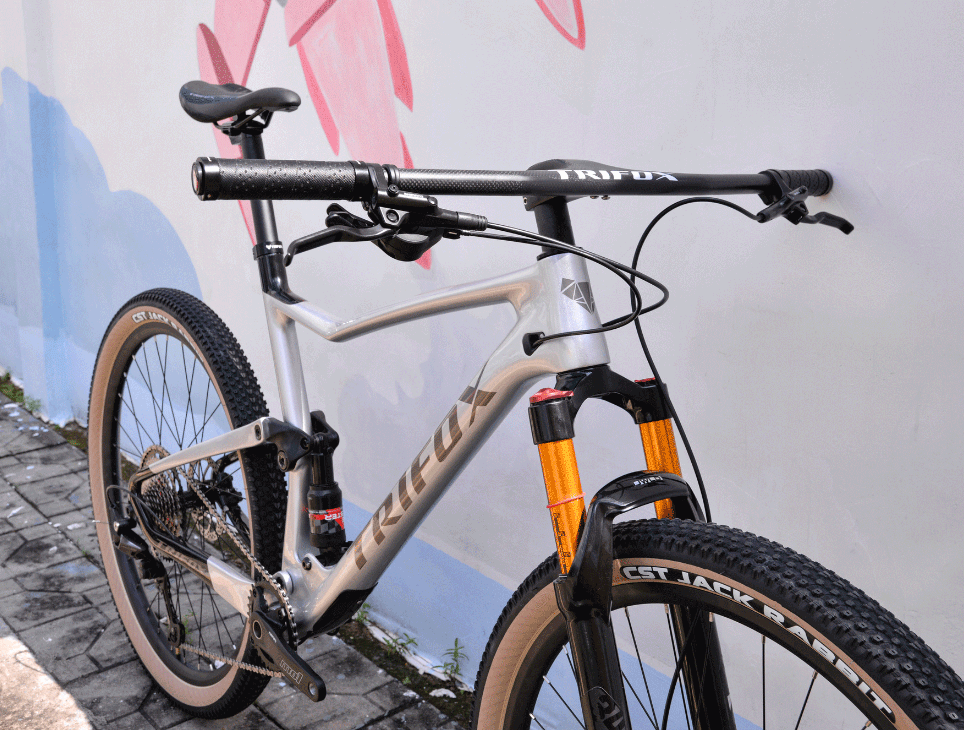
Carbon bike frames have become increasingly popular due to their lightweight, durability, and strength. However, despite these benefits, carbon bike frames are more susceptible to damage and require special care in the event of an accident. If you own a carbon bike frame, knowing how to fix it is essential to keep it in top condition. This guide will go over the steps on how to fix a carbon bike frame, the types of damage that can occur, and when it's necessary to take it to a professional. Step 1: Assess the Damage Before attempting to fix your carbon bike frame, take some time to assess the damage. Look for cracks, dents, or any other obvious signs of damage. It's important to have a good understanding of the extent of the damage before attempting any repairs. Step 2: Clean the Damaged Area Once you have identified the damage, the next step is to clean the area. Use water and a gentle cleaner to remove any dirt, debris, or grease around the damaged area. Step 3: Sand the Damaged Area After cleaning, use sandpaper to lightly sand the damaged area. The goal is to create a rough, textured surface for the repair to adhere to. Be sure to sand around the damage to create a smooth transition from the repair to the original surface. Step 4: Apply Resin The next step is to apply resin to the damaged area. Resin is a type of glue that is used to repair carbon bike frames. Apply the resin in thin layers, using a brush to spread it evenly. Allow the resin to dry completely between each layer. Step 5: Sand the Repaired Area After the resin has dried, use sandpaper to sand the repaired area. Start with a coarse grit and work your way up to a finer grit to create a smooth, even surface. Be sure to sand the edges of the repair to create a seamless transition between the repair and the original surface. Conclusion: In conclusion, fixing a carbon bike frame requires care, patience, and attention to detail. Always assess the damage, clean the area, sand the damaged area, apply resin, and sand the repaired area. Remember, if the damage is severe or you are unsure about your ability to fix it, take it to a professional. With these steps in mind, you can confidently repair your carbon bike frame and get back to riding. Happy biking!
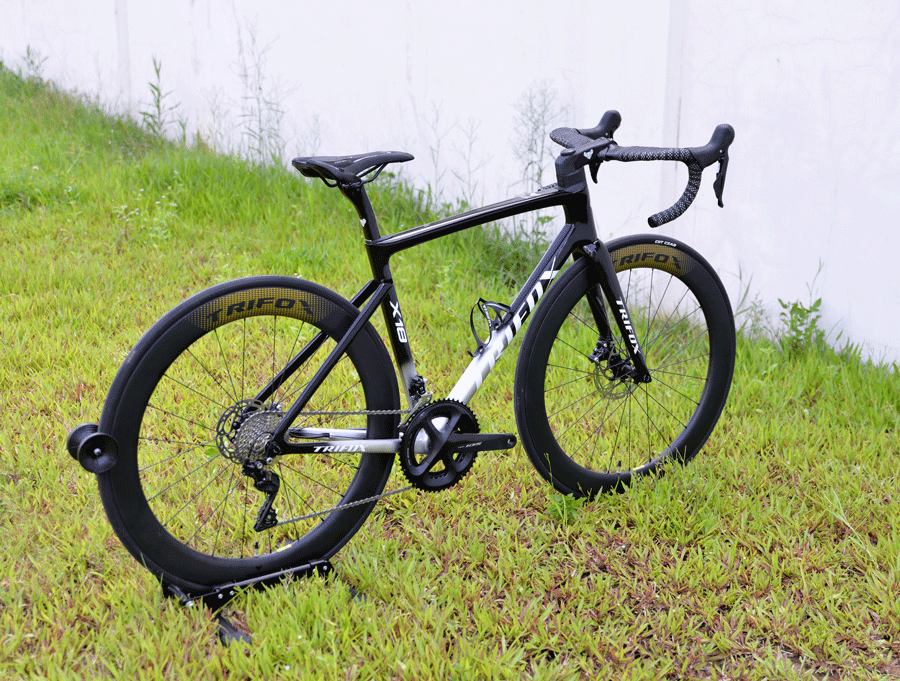
Road biking is an excellent outdoor activity that provides a great physical workout, mental relaxation, and great adventures on the open roads. However, choosing the right bike can be a daunting task, especially with many models and brands on the market today. Fortunately, 700c road bikes are becoming increasingly popular among cyclists, and for various good reasons. In this blog post, we will discuss why investing in 700c road bikes is worth it and how it can elevate your biking experience. 1) Speed and Efficiency: 700c road bikes are known for their speed and efficiency, making them a perfect bike for long-distance cycling and triathlons. With a larger wheel size of 700c and skinnier tires, they can easily maintain momentum and speed. This means that you can ride faster, further, and with less pedal effort, making them an ideal bike for commuters and long-distance cyclists looking to lower cycling times. 2) Enhanced Comfort: 700c road bikes are designed to provide enhanced comfort and prevent fatigue during long rides. They feature a geometry that encourages an upright posture while cycling, relieving the pressure on your lower back and wrists. Additionally, they feature thinner seat cushions that distribute weight evenly, keeping you comfortable for longer periods. 3) Durability: 700c road bikes are constructed using high-quality materials, making them more durable and long-lasting. For instance, carbon frames are lightweight yet strong, with a higher strength to weight ratio than steel frames. They can easily withstand rough outdoor terrains and heavy weights, making them an excellent investment. 4) Versatility: 700c road bikes are incredibly versatile, making them suitable for different types of cycling. Whether you are cycling for fitness, leisure, or commuting, 700c road bikes can serve you well. Also, you can easily mount racks for carrying luggage, making them a perfect cycle for touring. 5) Style: 700c road bikes' sleek and elegant design adds to their allure, making them a popular choice for style-conscious cyclists. Moreover, 700c road bikes are highly customizable, and you can easily swap components or upgrade them for a more personalized feel, making your ride more enjoyable. In conclusion, investing in 700c road bikes is worth it, providing a fantastic cycling experience filled with speed, comfort, durability, versatility, and style. While it may require a significant initial investment, the benefits that come with owning one are unmatched. Whether you are an experienced road cyclist, triathlete, or just cycling for leisure, a 700c road bike is a solid investment that will elevate your biking experience. If you're looking for a reputable brand, look no further than the Trifox Carbon 700c road bike.

Mountain biking is a thrilling adventure sport that demands high-performance bikes to take on challenging terrain. When it comes to choosing the right mountain bike, there are many factors to consider, such as the frame, suspension, speed, and braking system. Currently, the trend is shifting towards disc brake bikes due to their superior stopping power and durability. One of the best options in the market is Trifox Carbon Fiber Mountain PIONEER Bicycle, equipped with the latest technology, including high-quality disc brakes. Let's see why the Trifox Carbon Fiber Mountain PIONEER Bicycle is the best choice for disc brake mountain bikes. 1. Superior Stopping Power: One of the major advantages of disc brakes is their superior stopping power compared to rim brakes. Disc brakes use calipers to grip a rotor instead of pressing against a rim, which increases the mechanical advantage and stopping power. Trifox Carbon Fiber Mountain PIONEER Bicycle has hydraulic disc brakes from Shimano, a leading brand in the biking industry. These brakes are easy to operate and offer responsive stopping power in all weather conditions. 2. Easy to Control: Disc brakes offer better control and modulation than rim brakes. The rider can apply brakes with greater precision and finesse, enabling them to maintain speed and stability on challenging terrain. In contrast, rim brakes can overheat, warp, or fail in wet conditions. Trifox Carbon Fiber Mountain PIONEER Bicycle's Shimano hydraulic disc brakes provide excellent control, allowing riders to navigate steep descents confidently. 3. Low Maintenance: Disc brakes are low maintenance compared to rim brakes. Rim brakes require frequent adjustment, replacement, and servicing due to wear and tear caused by road debris and weather conditions. Disc brakes, on the other hand, are self-adjusting and require minimal maintenance. They also offer consistent braking performance over a broader range of temperatures and terrain. Trifox Carbon Fiber Mountain PIONEER Bicycle's Shimano hydraulic disc brakes are durable and require little maintenance. 4. Durability: Disc brakes offer exceptional durability compared to rim brakes. Rim brakes can wear down the sidewalls of the rim, leading to rim failure, especially on long descents. Disc brakes, on the other hand, don't wear out the rims, reducing the risk of rim failure. Trifox Carbon Fiber Mountain PIONEER Bicycle's Shimano hydraulic disc brakes are built to last, ensuring that riders can enjoy smooth and responsive stopping power for years to come. 5. Optimal Performance: Disc brakes offer optimal performance on challenging terrain due to their superior stopping power and control. Trifox Carbon Fiber Mountain PIONEER Bicycle is built with a full suspension carbon frame that provides exceptional shock absorption, allowing riders to maintain speed and stability on the most challenging terrains. Along with the Shimano hydraulic disc brakes, the bike's SHIMANO M6100 12speeds and strong shock absorption make the Trifox Carbon Fiber Mountain PIONEER Bicycle the best choice for disc brake mountain bikes in the market. Conclusion: The Trifox Carbon Fiber Mountain PIONEER Bicycle is an exceptional mountain bike that offers superior performance and durability, especially in challenging terrains. Equipped with Shimano hydraulic disc brakes, the bike provides exceptional stopping power, control, and low maintenance. Along with the full suspension carbon frame, Shimano 12speeds, and strong shock absorption, the bike offers optimal performance for mountain bikers of all skill levels. When it comes to choosing the best disc brake mountain bike, the Trifox Carbon Fiber Mountain PIONEER Bicycle is the perfect choice for those seeking adventure and high-performance biking.

As a cyclist, you're always on the lookout for ways to improve your ride. If you're looking for a way to make your bike even lighter, an ultralight seatpost could be the answer. In this blog post, we'll discuss why an ultralight seatpost is worth investing in and the benefits it can provide for your cycling experience. 1. Weight savings One of the main reasons to choose an ultralight seatpost is weight savings. By swapping out your heavy seatpost for a lighter one, you can shave off a few extra ounces or even grams from your bike's overall weight. While this might not seem like a lot, every little bit counts when it comes to endurance and performance cycling. The Trifox Super Light Straight Carbon Seatpost SLS21 mentioned above is a great option for those looking to reduce their bike's weight. 2. Improved handling Another benefit of an ultralight seatpost is improved handling. Since the seatpost is one of the most important contact points between you and your bike, any improvements made to its weight or stiffness can affect how the bike handles. An ultralight seatpost can help you feel more connected to your bike, providing a more responsive and stable ride. 3. Increased comfort While an ultralight seatpost can improve handling, it can also increase comfort. The use of carbon fiber makes these seatposts more flexible and able to absorb more vibrations than their heavier counterparts. This results in a smoother and more comfortable ride, especially on rough terrain. The Trifox Super Light Straight Carbon Seatpost SLS21 comes with a length of 400mm, which can further enhance rider comfort. 4. Durable and long-lasting Despite being lightweight, top-quality ultralight seatposts like the Trifox Super Light Straight Carbon Seatpost SLS21 mentioned earlier in this blog post are incredibly durable and long-lasting. They can withstand a lot of wear and tear and are highly resistant to damage from impact or vibration. Investing in a high-quality ultralight seatpost can save you money in the long run by reducing the need for frequent replacements or repairs. 5. Aesthetically pleasing Finally, an ultralight seatpost can add a sleek and stylish look to your bike. The matte finish of the Trifox Super Light Straight Carbon Seatpost SLS21, for instance, complements the black color and enhances the overall aesthetics of the bike. It's a small detail that can make a big impact on how your bike looks and feels. Conclusion: Choosing an ultralight seatpost can provide several benefits for your cycling experience, including weight savings, improved handling, increased comfort, durability, and aesthetic appeal. While they might be more expensive than traditional seatposts, the long-term benefits make them a worthwhile investment. So, if you're looking to take your cycling experience to the next level, consider upgrading to an ultralight seatpost today!

Mountain biking is an exciting sport that offers a unique blend of adrenaline rush and adventure. With the right equipment, it can be an excellent way to explore the outdoors, challenge yourself, and improve your fitness. And one of the essential components of your mountain bike is the handlebar. The handlebar is responsible for your control, stability, and comfort while you ride. If you're wondering which handlebars are best for mountain biking, then look no further than the Trifox carbon mountain bike handlebar. 1. Carbon Fiber Construction: Trifox uses high-quality carbon fiber to construct these handlebars, making them incredibly strong and durable while remaining light. This construction ensures excellent shock absorption, allowing you to ride comfortably on even the toughest trails. Plus, the handlebars' carbon fiber material makes them resistant to corrosion and weathering, making them ideal for outdoor use. 2. Wide and Ergonomic Design: The Trifox carbon mountain bike handlebars have a wide and ergonomic design that provides ample space for your hands to grip comfortably. The handlebars measure 780mm in width, making them suitable for riders of all sizes. This design feature also ensures that you can maintain the right posture while riding, reducing the strain on your wrists and arms. 3. Easy Adjustment: The handlebars come with markings that make it easy to adjust them to your preferred angles. This feature ensures that you can set the handlebars to your specific riding style and comfort. The adjustable angle option also makes it easier for you to control the bike while riding, making the experience more enjoyable. 4. Lightweight and Aesthetically Pleasing: Notably, these handlebars have a sleek and modern look, perfect for any mountain bike. They are lightweight, weighing only 170g, which minimizes the bike's overall weight, helping you ride more smoothly. Additionally, the handlebars have a glossy finish that gives them an aesthetically pleasing look that complements your bike. 5. High-Quality and Affordable: Lastly, the Trifox carbon mountain bike handlebars are an excellent option because they are affordable without sacrificing quality. The handlebars offer high performance while being cost-effective. Therefore, with these handlebars, you can get the best of both worlds - affordability and quality. Your handlebars play a significant role in your overall mountain biking experience. And, as we've seen above, Trifox carbon mountain bike handlebars have everything you need to make your next adventure an unforgettable experience. The carbon fiber construction, ergonomic design, easy adjustment, lightweight property, and affordability make them some of the best handlebars rightly deserving to be on your bike. They are perfect for anyone looking for maximum control, comfort, and durability on the trails. So what are you waiting for? Get yourself a pair of Trifox carbon mountain bike handlebars and ride off into the mountains with confidence.

Riding a bike is not only a great exercise but also a fun recreational activity. For serious cyclists, a bike computer is essential to monitor progress, track performance, and track routes. However, having the bike computer in your pocket or handlebar bag when riding is inconvenient, uncomfortable, and increases the risk of dropping and damaging the device. That is why many cyclists opt for a bike computer mount. In this blog post, we will discuss the advantages and disadvantages of using a bike computer mount to help you decide whether it is worth investing in one. Advantages of using a bike computer mount 1. Improved visibility and comfort: One of the most significant benefits of using a bike computer mount is that it improves visibility and comfort while riding. A bike computer mount allows you to glance down at the device easily, without having to take your hands off the handlebars or look away from the road. This not only helps you stay more focused on the road, but it also reduces the risk of accidents. 2. Accurate data tracking: Another advantage of using a bike computer mount is that it provides accurate data tracking. Without a mount, the device may move around in your pocket or bag, resulting in inaccurate tracking. A bike computer mount, on the other hand, fixes the device in place and ensures consistent and accurate data. 3. Track performance and measure progress: A bike computer mount can help you track your performance and measure progress. With features like GPS, heart rate monitoring, and cadence tracking, you can monitor your stats and make adjustments to improve your performance and reach your fitness goals. Disadvantages of using a bike computer mount 1. More expensive: The primary disadvantage of using a bike computer mount is that it is more expensive than other mounting options, such as a handlebar bag or pocket clip. Depending on the brand and model, a bike computer mount can cost anywhere from $10 to $50 or more. 2. Possible damage to the bike: Another disadvantage of using a bike computer mount is that it can cause damage to the bike if not installed correctly. If the mount is too tight or too loose, it can damage the handlebars, stem, or bolt threads. Additionally, the weight of the device can cause stress on the mount, causing it to wear out quickly. 3. Hindrance while riding: Lastly, a bike computer mount can be a hindrance while riding if it is not positioned correctly. If the device is too close to your hands or too far away, it can cause discomfort or make it difficult to see the road ahead. It is essential to position the mount accurately for optimal visibility and comfort. In conclusion, using a bike computer mount has several benefits, including improved visibility and comfort, accurate data tracking, and the ability to track performance and measure progress. However, there are also a few disadvantages to consider, such as the more expensive cost, possible damage to the bike, and hindrance while riding. Ultimately, whether or not a bike computer mount is worth the investment depends on your personal preferences and needs. If you are a serious cyclist and want to optimize your performance, a bike computer mount may be a wise investment. However, if you ride casually and prefer a more affordable or low-maintenance option, there are other mounting options to consider. Whatever your choice, always remember to enjoy the ride and stay safe!
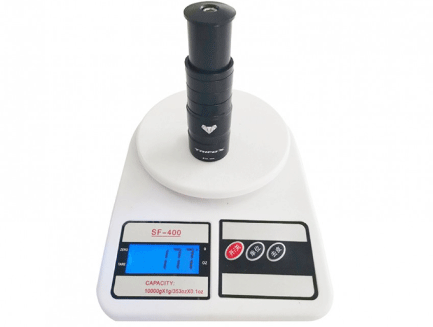
Bicycling has been a popular sport and means of transportation for centuries. However, with different types of bicycles and riding styles, you need to ensure that your ride is comfortable, stable, and efficient. One way to achieve this is by getting a stem extender, an accessory designed to raise your handlebars. You may be hesitant to invest in one, but with the benefits it offers, it's worth considering. 1. Improves Comfort and Ergonomics If you've ever experienced neck, shoulder, or back pain during or after a ride, then you understand the importance of proper positioning on a bike. With a stem extender, you can raise the handlebars to a suitable height, ensuring that you don't experience discomfort. Additionally, a higher handlebar position will help you maintain a more upright posture, preventing you from experiencing numbness in the hands and fingers. 2. Enhances Control and Stability When you ride your bike in a relaxed position, you can maneuver your bike with ease, allowing you to take on different terrains. With a stem extender, you can achieve a relaxed and comfortable posture, enabling you to ride with control and stability. You'll be able to ride longer distances without experiencing strain on your back, neck, or shoulders. 3. Versatility and Customization A stem extender gives you versatility when it comes to adjusting the height of the handlebars. You can adjust it to suit your riding style, preferences, and body type, ensuring that you ride in a comfortable and controlled position. Additionally, with a stem extender, you can play around with different handlebar styles, such as drop bars or bullhorns, which can enhance your grip and control on the bike. 4. Cost-effective Solution Getting a bike customized to your needs or purchasing a new bike with customized features can be expensive. However, with a stem extender, you can achieve the same customization on your current bike, saving you money in the long run. A stem extender is easy to install and does not require any modifications to your current bike, making it an affordable solution to optimize your riding experience. 5. Suitable for Different Bikes and Riding Styles Stem extenders come in different sizes and styles, making them suitable for different types of bikes, such as road bikes, hybrid bikes, mountain bikes, and BMX bikes. Whether you're a commuter, a leisure rider, or a professional cyclist, a stem extender can enhance your comfort, control, and performance on the bike. Conclusion: Investing in a stem extender is a cost-effective and versatile way to enhance your bicycle's performance and your riding experience. With the improved comfort, control, and ergonomics that come with a stem extender, you can ride longer and enjoy your ride more. So why not consider getting one for your bicycle today?

















